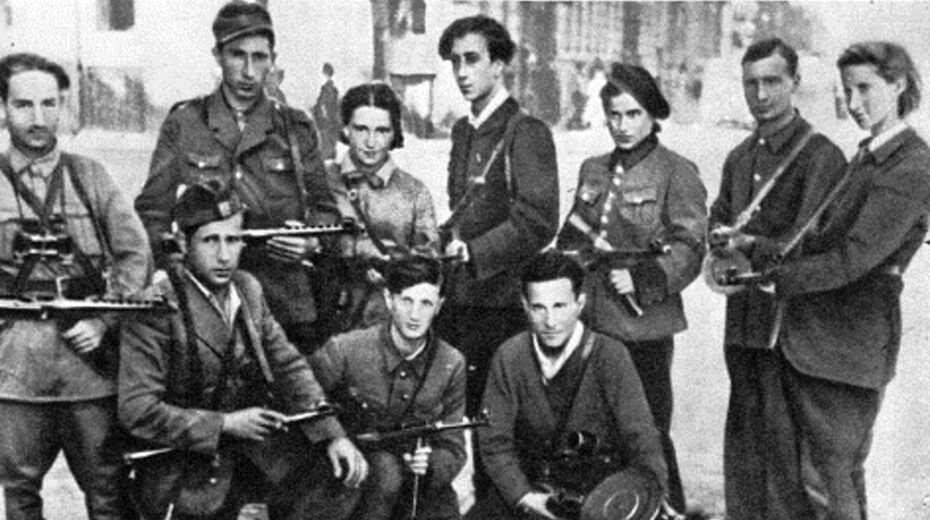Today, April 8 / 27 Nisan, is Yom HaShoah, the day Israel commemorates the destruction of 6 million Jewish lives in Europe. In full, this day is called Yom haZikaron laShoah u’laGevurah, Day of Remembrance of Destruction and Heroism.
Israel Today
April 8, 2021

Not only are the Jewish victims during World War II commemorated, but also the Jewish resistance to the Nazis. The reason for the latter was the observation, in the 1950s, that young Israelis could feel little sympathy for the victims of the Holocaust, believing that European Jews had been led like sheep to the slaughter.
The Israeli education curriculum therefore began to pay more attention to Jewish resistance to their Nazi tormentors through “passive resistance,” upholding human dignity in the most unbearable conditions, and through “active resistance,” fighting the Nazis in the ghettos and joining underground partisans who fought the Third Reich in the occupied countries.
Last year, The Wiener Holocaust Library set up an exhibition on Jewish resistance to the Holocaust. Jewish partisan groups and underground resistance networks launched attacks, sabotage operations and rescue missions. Resistance groups in ghettos organized social, religious, cultural and educational activities, and armed uprisings in resistance to their oppressors. In the most extreme circumstances, resistance fighters in the death camps collected evidence of Nazi atrocities and even staged armed uprisings.
Bielski partisans
Among the most well known Jewish resistance movements, and the focal point of the Wiener Holocaust Library exhibit, are the Bielski partisans.

During the initial Nazi onslaught into eastern Poland (that is now part of Belarus), Tuvia, Asael, Zus and Aron Bielski fled into the nearby forests that they knew so well. Their parents, two younger siblings, and so many more of Poland’s Jews weren’t so lucky.
But rather than hide and try merely to survive the war, and the Nazi Jew-hunters, the Bielski brothers decided to fight back, and to save as many additional Jewish lives as possible.
They carried out a number of attacks and sabotage operations against Nazi and Nazi-aligned forces, and before long the brothers were harboring no fewer than 1,200 Jewish refugees.
After moving around repeatedly in sometimes vain efforts to evade the Nazis, the group eventually established Camp Jerusalem deep in the forests in what was the Soviet partisan sphere of influence. Not many of their number were fighters, but the rest of the Bielski partisans did what they could and created a nearly self-sufficient settlement including a kitchen, forge, school, gunsmith, mill and a tannery that doubled as a synagogue.
Since they were nominally under Soviet partisan command, at least one of the brothers, Asael, was drafted into the Red Army after it had liberated the area in 1944. Asael would die a year later fighting the Nazis, this time as a Soviet soldier.
Following the war, Tuvia and Zus immigrated to Israel and fought in the War of Independence. No doubt having had their fill of conflict, the brothers left for America in the 1950s to join an older brother, Walter, who had gone there before World War II.
Tuvia and Zus lived out the rest of their days in relative obscurity, despite the incredible role they had played in resisting the Nazis and saving Jewish lives.
Tuvia Bielski, the skilled and effective leader of the greatest armed Jewish resistance movement in World War II, died in 1987 and was buried in Long Island, New York to little, if any fanfare. But a year later, his body was exhumed and taken to Israel, where he received a state funeral with full military honors, as befitting his exploits and his sacrifices.
The story of the Bielski partisans is dramatized in the 2008 film Defiance.
No comments:
Post a Comment